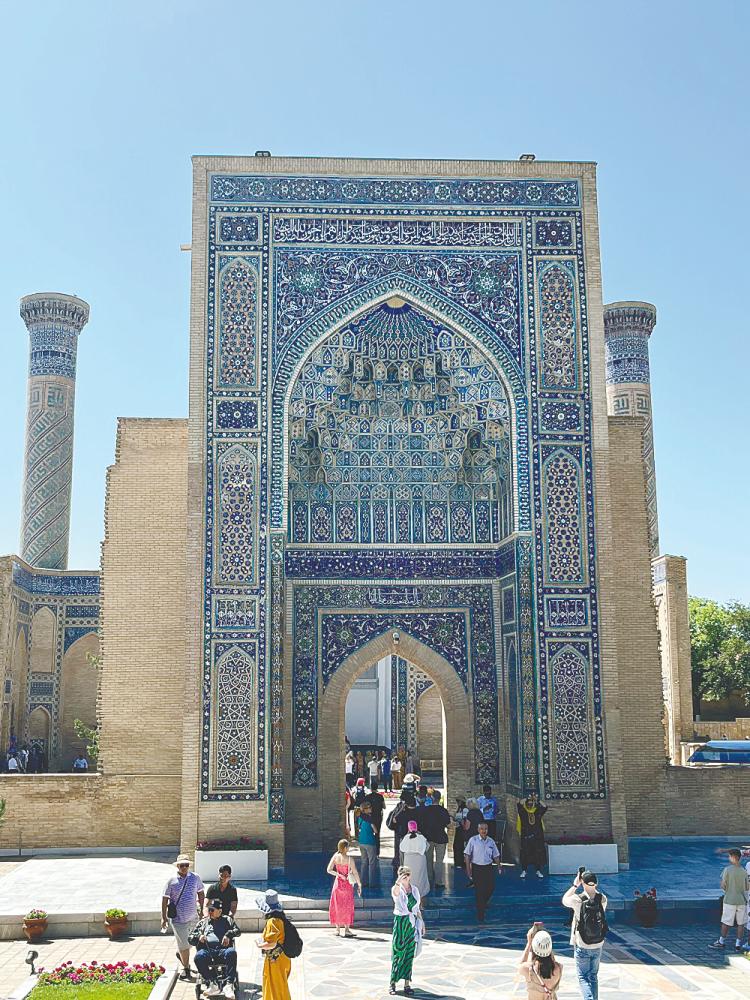THE clear blue skies of Samarkand instils a sense of serenity and calm in all who visit this majestic city that was once the epicentre of the Timurid dynasty. Samarkand was the glorious capital of King Amir Temur’s kingdom in the 14th century. Nearly 700 years later, this grand city still has not lost its charm or grandeur.
It is said that the kings of yesteryear were so inspired by the clear blue skies of Samarkand that they incorporated the colour into all distingushed buildings. Turquoise is said to be the royal color, but various shades of blue are used to reflect the calm sky in historic buildings in Samarkand and in other parts of the Republic of Uzbekistan.
A historical city, Samarkand, or sometimes spelled Samarqand, takes pride in the legacy of its kings.
King Amir Temur turned the medieval Samarkand (formerly Afrasiab, which means a stone rock place or fort) into his capital. During his rule, Amir Temur, or Timur, the most powerful king in Central Asia, ordered the erection of structures that still stand as key Islamic monuments in Samarkand.
The second largest city after Uzbekistan’s capital Tashkent, Samarkand has an abundance of turqoise or blue-coloured mosques, domes, madrasahs (Islamic teaching institutions), mausoleums and minarets and the region was added to the World Heritage List in 2001 as “Samarkand: Crossroads of Cultures”.
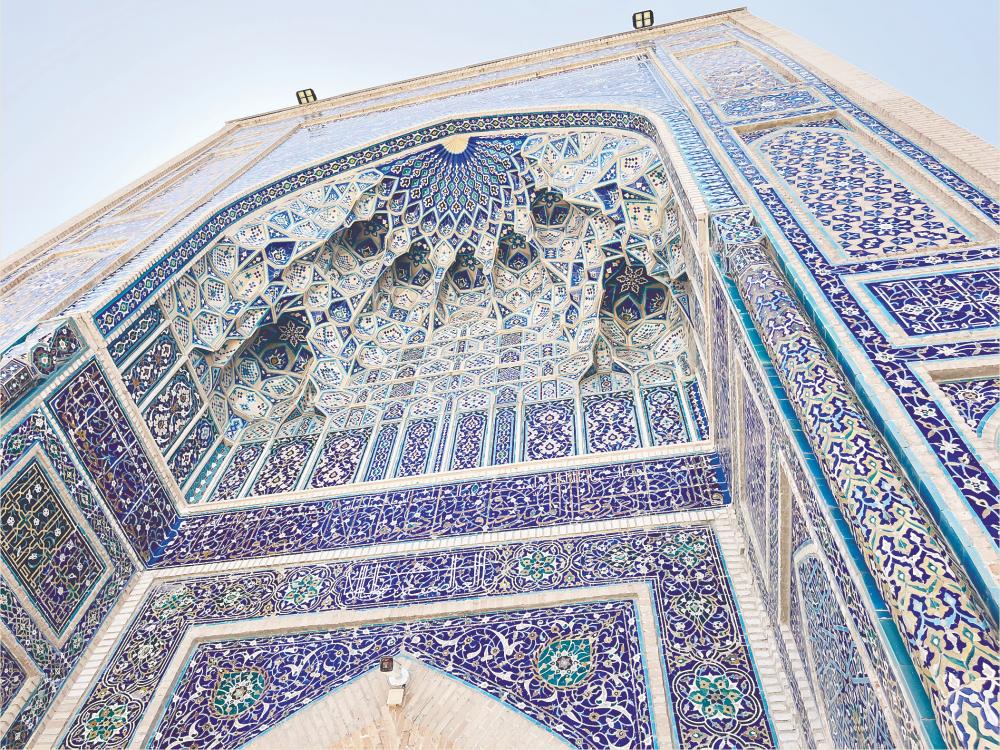
Gur-e-Amir Mausoleum
One of the most beautiful structures erected at the order of Amir was the royal tomb for his grandson, which eventually became a mausoleum for the Timurid Dynasty called Gur-e-Amir Mausoleum, or simply known as Amir Temur’s mausoleum among the locals.
It was originally constructed for Amir’s beloved grandson and the crown prince Muhammad Sultan, after his eldest son Jehangir Ali died when he was just 23.
However, the then future heir to the throne died due to injuries in a war and the devastated Amir ordered the mausoleum to be built. The construction began in 1403. Amir himself was buried there after he fell ill and died in 1405 during his military campaign against the Ming Dynasty in China.
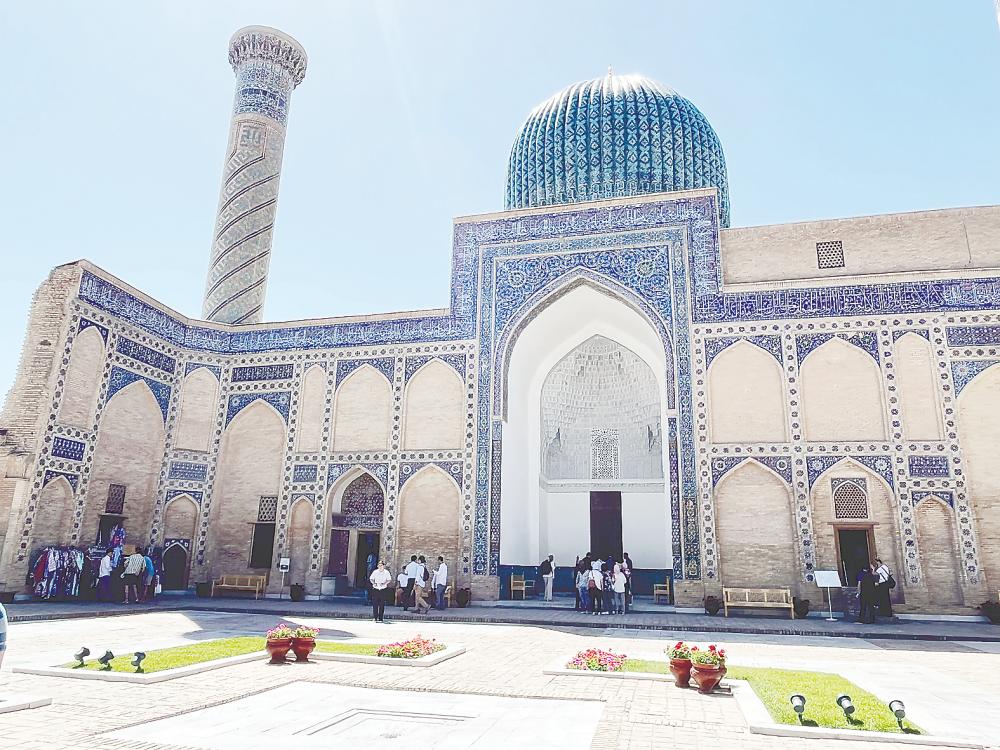
Adorned with intricate turquoise, blue and white mosaic as well as majolica decorative tiles, Arabic calligraphy, geometry and flower patterns complemented with gold trims, all combine to present a grand facade of the entrance.
Behind the structure or portal, lay a vast courtyard with red roses in pots. Just behind the courtyard, stands another facade with three-dimensional stalactite or muqarnas vaulting.
The Islamic heritage is best represented by a 12.5m beautiful blue dome with 63 rows or facets of turquoise tiles, the main attraction of the structure peaks out with two towering minarets flanking the entrance arch.
Initially, there were four minarets, but two were destroyed during an earthquake as well as the passage of time.
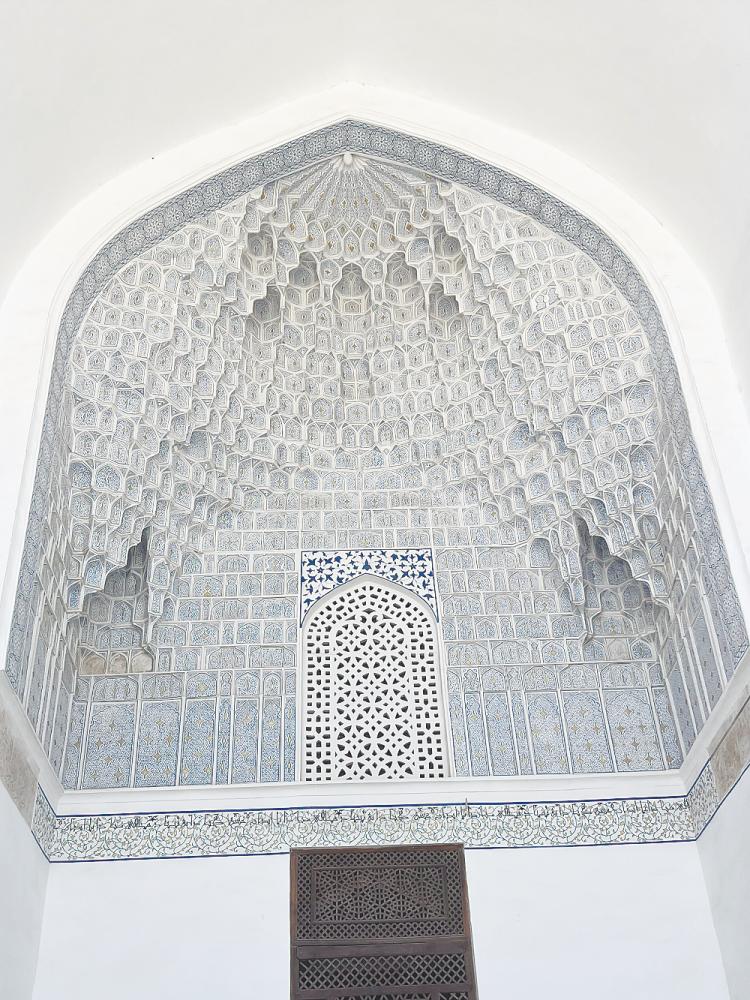
A madrasah and a hanaka (a place for religious teachers and pilgrims to stay) were added on each side by another grandson of Timur, Ulubegh Mirza, but they were also destroyed due to an earthquake, leaving only the ruins at the site.
Inside the mausoleum, or maqbara, a coloured painting of Amir Temur and a map of his vast empire during his glory period greets visitors before stepping into the dome, where Amir is buried.
Attention is then immediately drawn to the impressive gilded decoration on the ceiling of the inner dome and a gorgeous gold chandelier, reflecting the exquisite skills of artisans of that period.
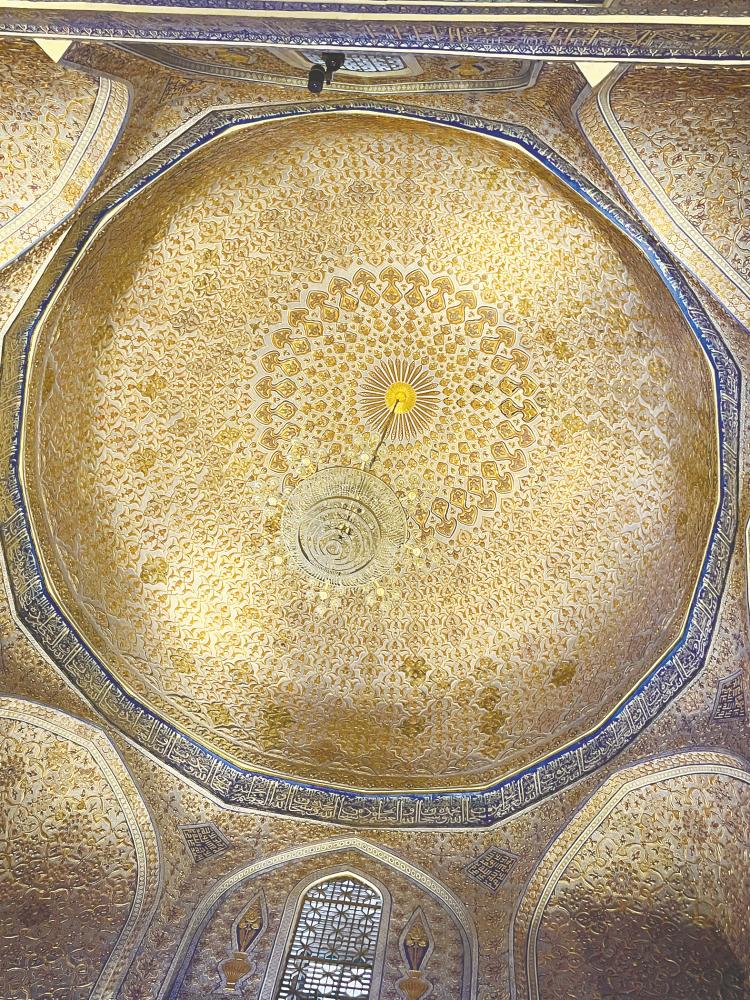
From top to bottom, the marble walls are adorned with refined gold geometry patterns, floral designs, calligraphy and epigraphy, all made with “papier mache” techniques and applied with gold leaves.
The gold muqarna (ornamental vaulting, which appears like staclyites) glow in harmony with the turquoise tile patterns, showcasing the grandeur and wealth of the dynasty.
A tombstone for Amir, in a contrasting black colour, is placed directly below the chandelier, alongside his four sons Jehangir, Umar Shaikh, Miran Shah Mirza and Shahrukh Mirza, his grandsons, his religious teacher and his crown prince Muhammad Sultan (marked with a slab of green jade placed on top).
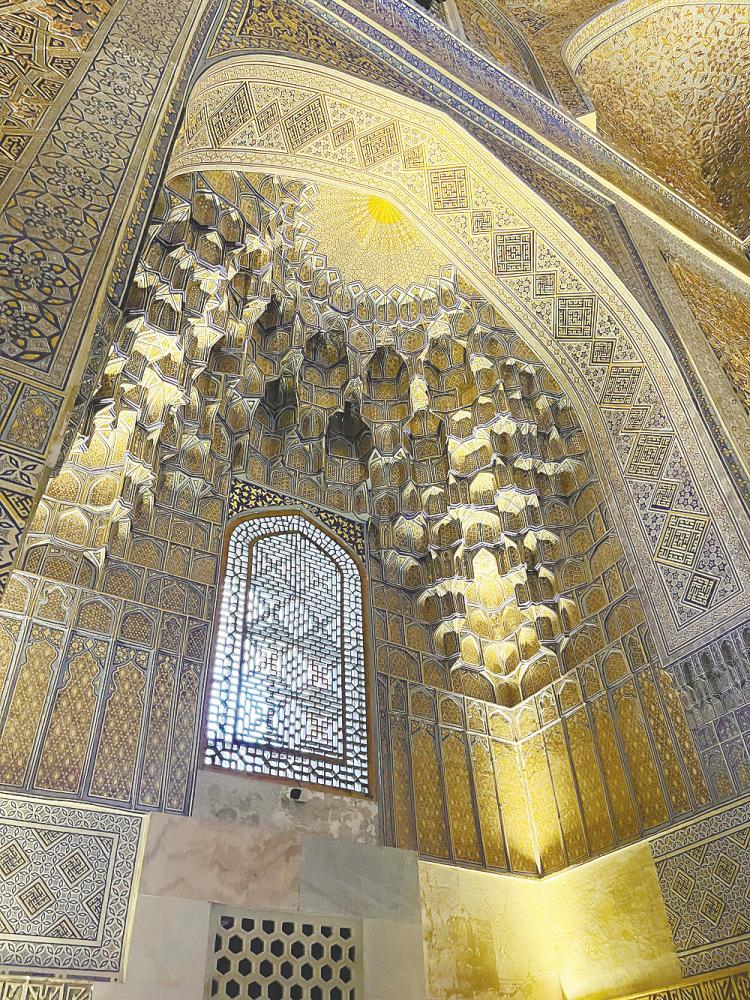
There was complete silence in the “gold room”, as visitors took a moment to pray or show respect to them.
Despite the sunny weather outside, windows – four on the upper part and four on the lower part of the dome – at each corner allowed the air to circulate and kept the marble walls and room floor cool, one of the architectural techniques used in the 14th century.
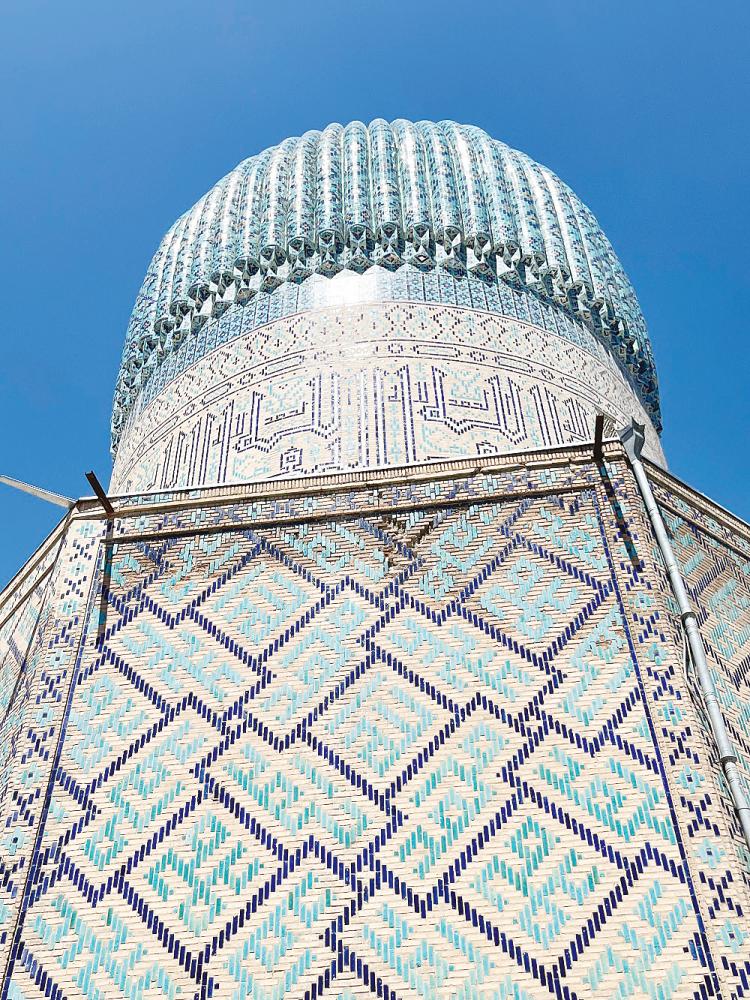
Samarkand Registan Square
Uzbekistan has more than 3,000 mosques, madrasahs and minarets, but nothing compares to the magnificent Samarkand Registan Complex, a must-visit attraction for all who head to this ancient destination.
Reg, or Regis, means sand, and registan means sandy place in the Persian language.
Built under the order of the Timurid Dynasty, the vibrant blue complex has not one but three rectangular facades comprising a gilded mosque, Ulugbek Madrasah and Sher-Dor Madrasah on each side, constructed at different times between the 14th and 17th centuries.
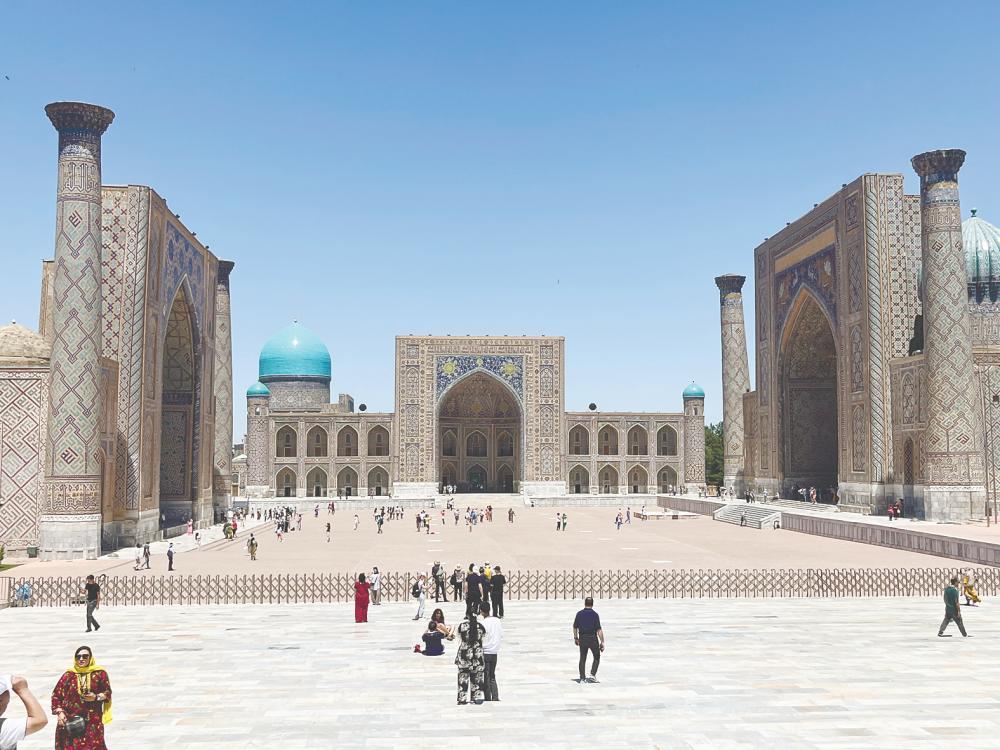
The Ulugbek Madrasah was built by the order of Mirzo Ulugbek (Amir’s grandson), and the architect was Kavomiddin Sherozi. The other Sher-Dor Madrasah was built 200 years later between the 16th and 17th centuries.
The sheer height of the three enormous structures is a sight to behold while each facade has a different design. It was just astounding to stand in the middle and admire the immense beauty of the structures on all three sides.
The stunning mosaic patterns, majolica tiles in various shades of blue with beautiful floral patterns, Islamic calligraphy and geometric design, all of which are key Islamic design elements, leaves visitors in awe.
The Tillakori (gold or gilded) mosque boasts gorgeous mosaic work with geometric patterns in blue, white and of course, gold.
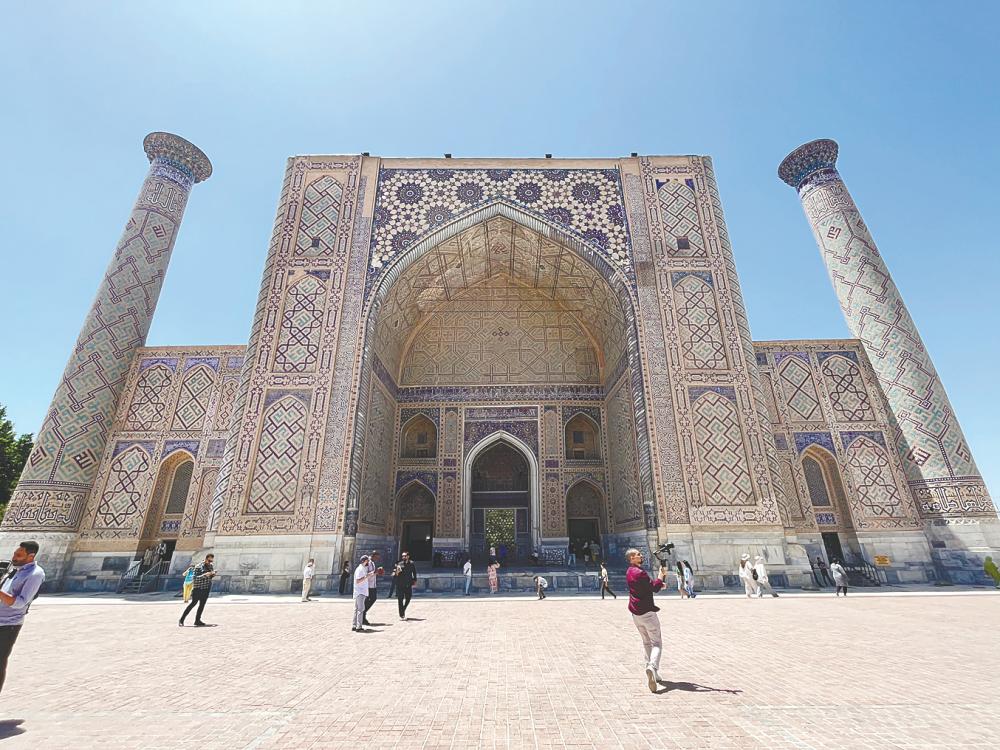
The blue mosque building, partly turned into a museum, exhibits antique fragments of ceramics, pottery, metal pots, teapots and metal jewellery with precious stones from past eras.
It also houses souvenir shops selling handcrafted “Suzane” needlework clothes, ancient musical instruments, traditional handmade daggers, Pichak, painted plates and tiles, traditional clothes and games, ceramic plates, ceramic dolls and many other items.
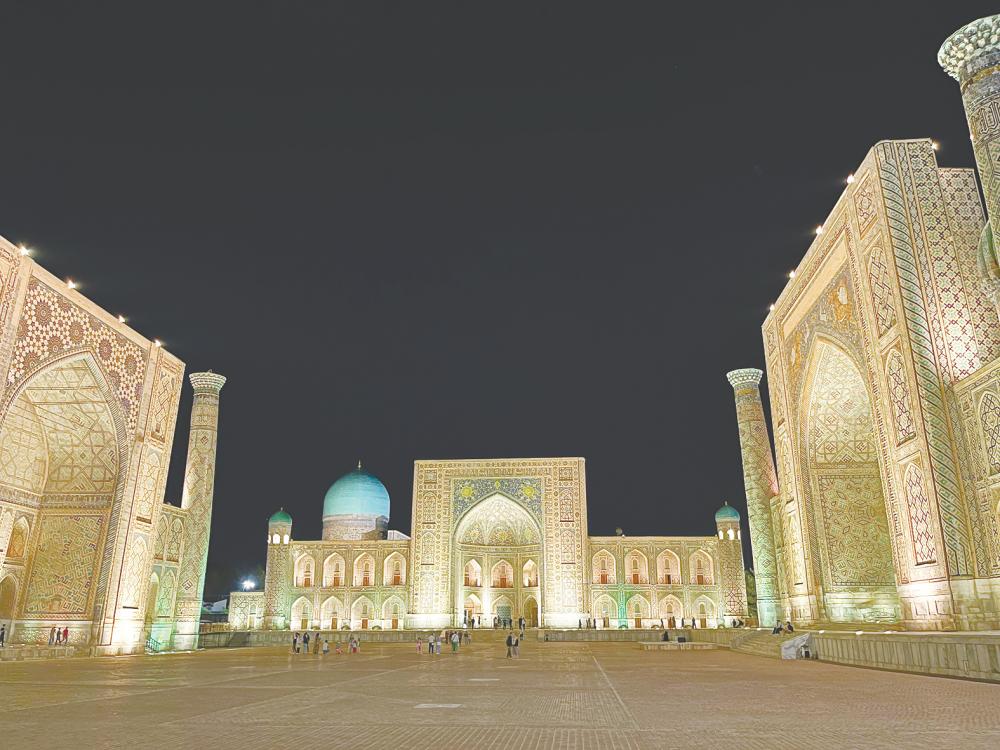
One of the madrasahs offers a glimpse of the history of ancient astronomy and exhibits handmade metal products from the 19th and 20th centuries, while another houses unique, modern and original handmade silk carpets made in the city.
In the front of the vast complex, there was a beautiful park with green pastures, rows of tall trees providing shade, and colourful landscaped flower gardens for visitors to enjoy, relax on the grounds, and immerse in nature while children play around.
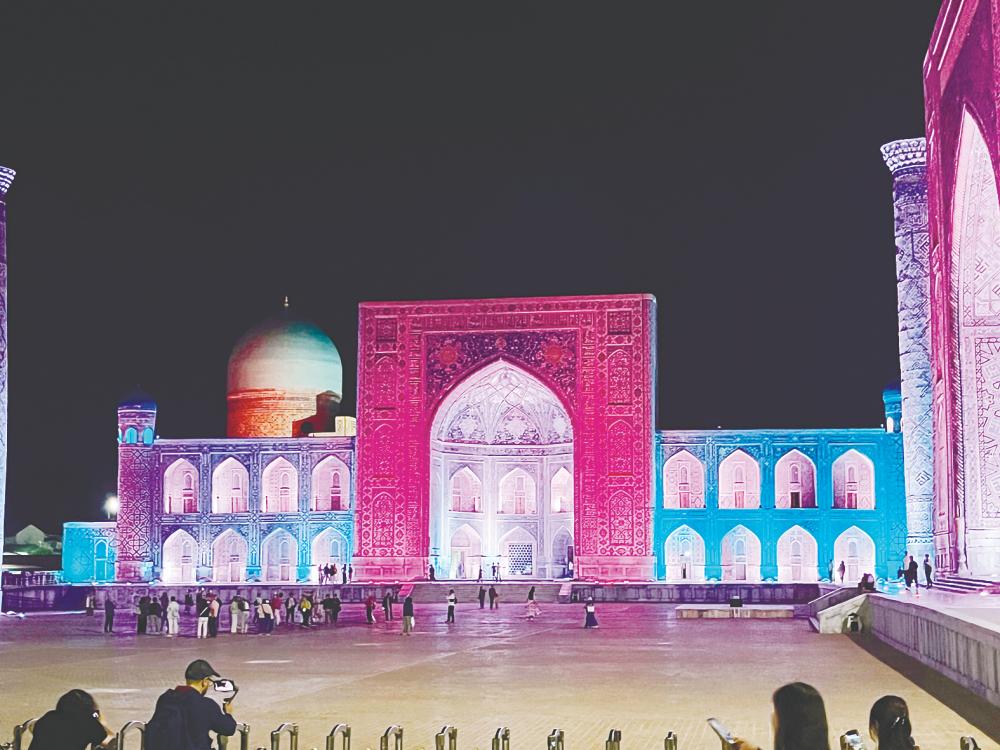
A cafe in the middle of the park provides a perfect spot to sip a cup of coffee on a windy day or to just absorb the scenery at an unhurried pace.
Always budget sufficient time to fully explore this vast complex. Even late into the night, Samarkand Registan Square will still be buzzing with tourists taking Insta-worthy pictures, shopping for souvenirs and flocking to the cafe and restaurants that are within walking distance.
Malaysian tourists should check the weather forecast for the planned tour period before booking tickets to Samarkand or Uzbekistan.
During the autumn season, which begins from March to May, the temperature hovers at between 20°C and 25°C. But it could get hotter in the summer, with a maximum of 30°C.



